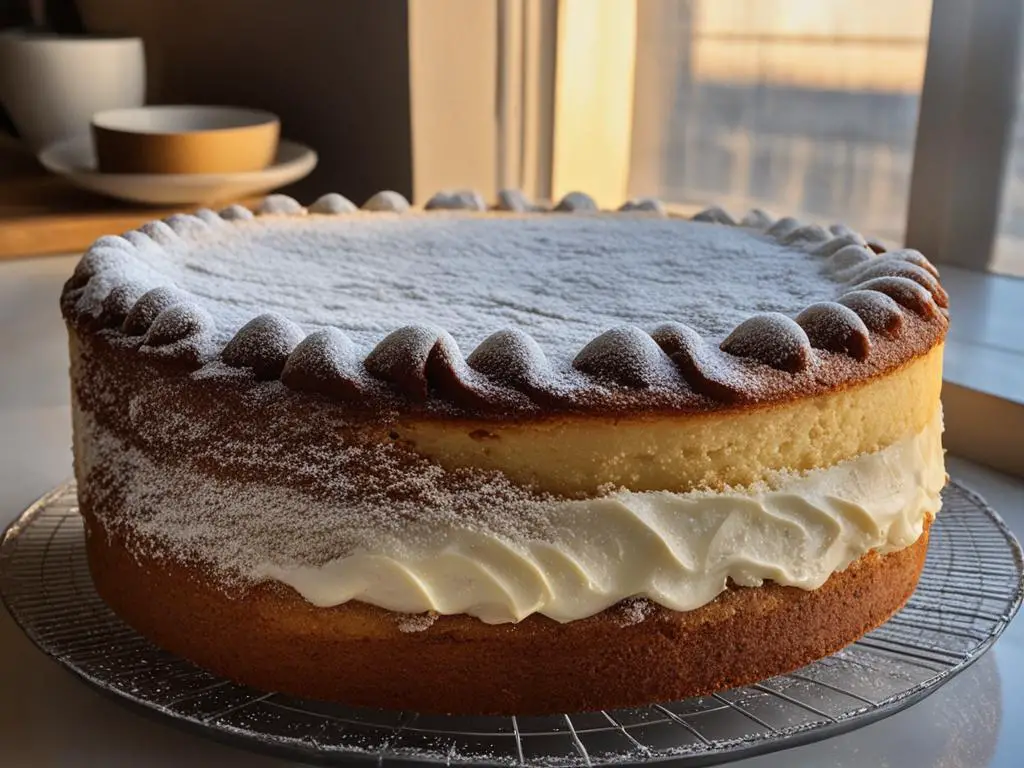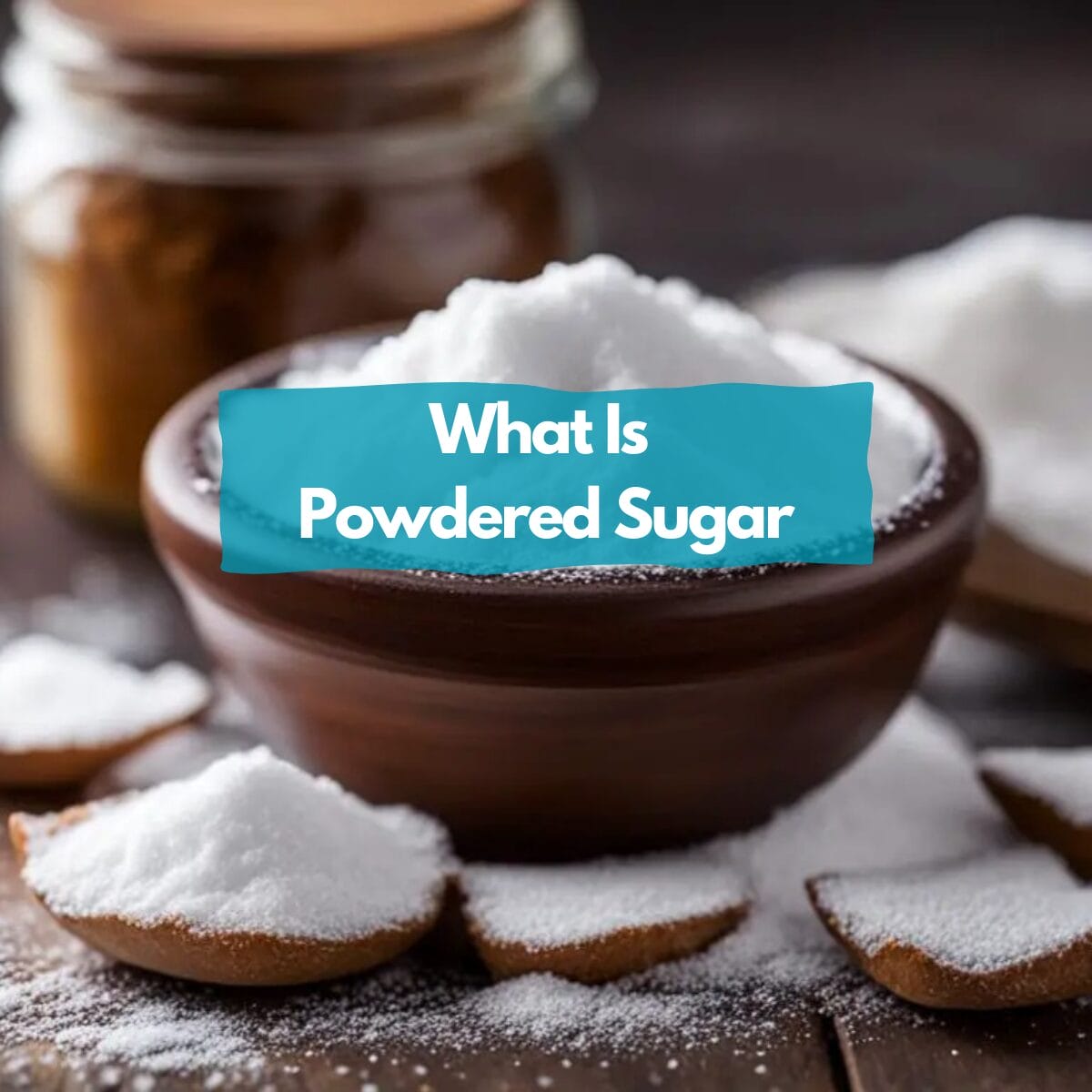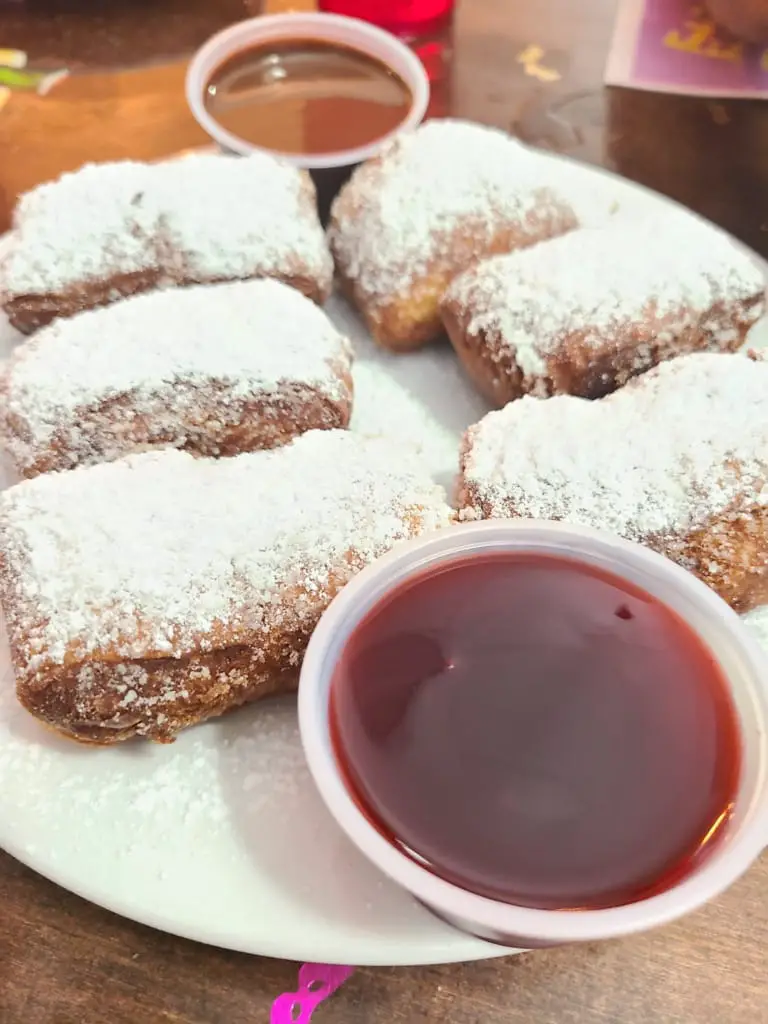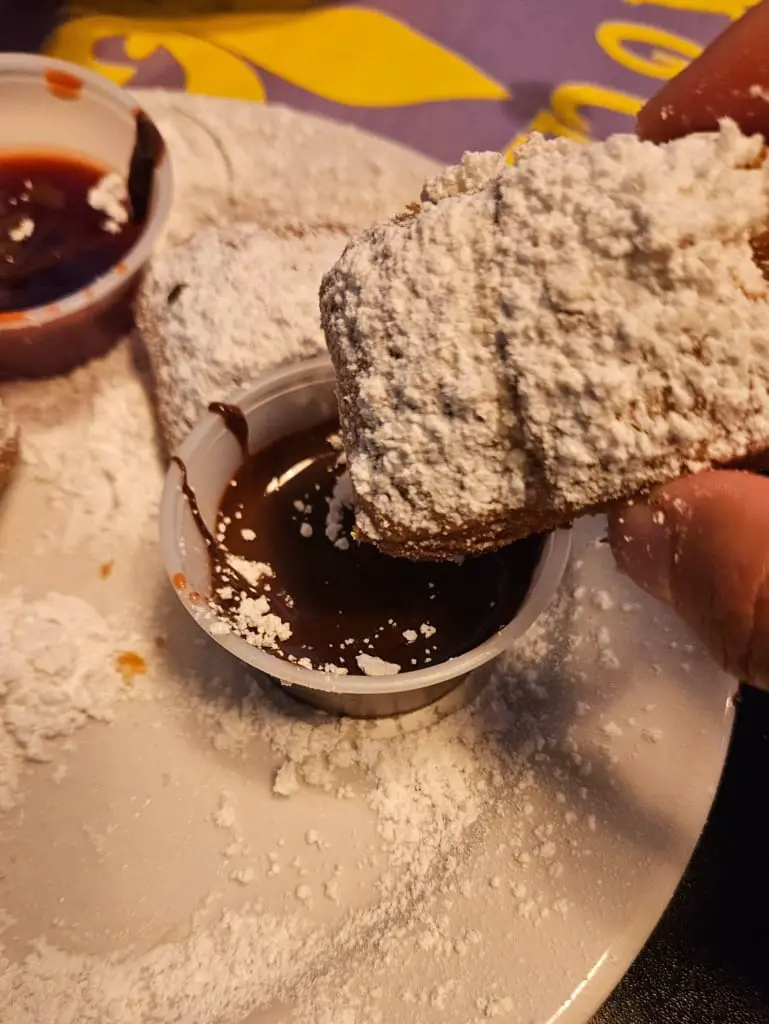Have you ever marvelled at the perfect dusting of sweet magic on your favorite doughnuts, icing on cakes, or the creamy sensation of frosting? If the answer is yes, then you, my dear friend, have been bewitched by the wonders of powdered sugar.
Also known as confectioners’ sugar or icing sugar, this sweetening agent is an essential component of any baker’s pantry and can take your sweet creations to the culinary stratosphere.
Curious about what is powdered sugar, how to use it in your recipes, and how it differs from granulated sugar? Keep reading to learn all about this baking essential and how to make the most of it in your kitchen creations.
Unveiling Powdered Sugar: A Baker’s Secret Weapon
Curious about what makes powdered sugar such a beloved and versatile ingredient in the world of baking? The secret lies in its unique properties – from its smooth texture to its ability to ward off pesky clumps. Let’s delve into the world of powdered sugar and learn what makes it truly special.
The Many Names of Powdered Sugar
Powdered sugar isn’t just versatile in use—it also goes by several names. You might hear it referred to as confectioners’ sugar, icing sugar, or 10X sugar, which hints at its common use in sweetening and decorating a variety of baked goods. Whether dusted on your favorite doughnut or whipped into a glorious buttercream, powdered sugar is a true baking staple in any kitchen.
Understanding “10X” on Powdered Sugar Packaging
Have you ever noticed the “10X” on the label of your powdered sugar package? This mysterious code actually conveys the fineness of the sugar’s grind, with the number indicating how many times it’s been milled. The higher the number, the finer the powder and the quicker it dissolves, making it ideal for creating the perfect texture in your baked goods.
Texture and Consistency
In comparison to granulated sugar, powdered sugar boasts a fine, powdery consistency that imparts a delicate, smooth texture to concoctions. This makes it an ideal choice for achieving a uniform and consistent sweetness in your baked goods.
Its subtle sweetness and delicate texture also make it perfect for creating melt-in-your-mouth frostings, icings, and glazes, turning ordinary desserts into unforgettable treats.
The Role of Starch Additives
Starch additives are crucial in preserving the powdery texture of sugar, as they act as anti-caking agents. While cornstarch is the most common choice, other starch options, such as potato and tapioca, are not unheard of. The choice of starch can potentially affect both the flavor and the overall output of your creations.
If you’re looking to experiment with various starch additives, consider trying small batches to determine which type best suits your culinary vision.
What is Powdered Sugar and How is It Made?
Powdered sugar is simply granulated white sugar that has been ground to an exceptionally fine consistency, and then combined with cornstarch to preserve its powdery texture. In a few simple steps, you can create homemade powdered sugar by pulverizing granulated sugar into a fine powder using common kitchen appliances, such as a food processor or blender.
As you’ll see below, creating your own powdered sugar is a surprisingly straightforward process.
- Measure the ingredients: Measure your desired amount of granulated white sugar and a small portion of cornstarch (about 1 tablespoon per cup of sugar).
- Blend the sugar: Place the sugar and cornstarch into your food processor or blender and blend together at high speed until a fine powder is formed.
- Sift the mixture: Sift the blended sugar through a fine-mesh sieve to eliminate any remaining granules that didn’t get processed fully, ensuring a smooth texture for your homemade powdered sugar.
- Adjust the texture: If you desire a finer consistency, blend the sugar for an additional 30 seconds before sifting again.
- Store properly: Transfer the powdered sugar to an airtight container and store it in a cool and dry place to preserve its powdery consistency and prevent clumping.
Mastering the art of creating homemade powdered sugar is not only a cost-effective approach, but it also allows you the flexibility to adjust the cornstarch content to suit your specific culinary preferences, enhancing both the quality and taste of your sweet creations.
When to Use Powdered Sugar
When it comes to perfecting the art of sweetening, powdered sugar is a game changer. This trusted sweetening ingredient breathes life into a wide array of culinary uses, elevating the texture and taste of various desserts.
A great strength of powdered sugar is its sugar-dissolving prowess at room temperature, which makes it indispensable in creating icings and glazes. Often, using granulated sugar in such recipes results in a disappointingly grainy texture, which is far from the desired silky-smooth consistency.

Need a little more convincing? Allow us to provide some inspiration with a few examples:
- Classic American Buttercream: The fine texture of powdered sugar helps create a smooth, spreadable frosting ideal for decorating cakes and cupcakes.
- Homemade Chantilly Cream: Just a spoonful of powdered sugar can turn regular cream into a luxuriously smooth Chantilly cream.
- Rich Chocolate Ganache: Powdered sugar is the perfect choice for a chocolate ganache that needs both a smooth feel and a shiny look.
- Snowball Cookies: Also known as Russian tea cakes or Mexican wedding cookies, these delicate morsels are generously dusted with powdered sugar for their iconic look.
Incorporating powdered sugar into your baking ensures that your desserts not only taste great but also have the professional-quality texture that makes them irresistible. With this sweetening ingredient in your toolkit, you’re well on your way to achieving dessert perfection!
Enchanting Recipes Using Powdered Sugar
Powdered sugar, with its fine texture and delightful sweetness, transforms everyday recipes into magical culinary creations. This versatile ingredient plays a crucial role not only in decorating but also in enhancing the flavors and textures of various dishes. From rich icings to delicate toppings, powdered sugar adds a touch of elegance and sweetness to any treat.
Here are some enchanting recipes that showcase the versatility of powdered sugar:
- New Orleans Style Beignets: Experience a taste of New Orleans with these classic beignets, generously covered in powdered sugar for a sweet, cloud-like finish.
- Lemon Blueberry Cake: Drizzle your lemon blueberry cake with a smooth powdered sugar glaze that complements the tartness of the lemon and the sweetness of the blueberries, creating a visually appealing and deliciously balanced dessert.
- Poffertjes: These Dutch silver dollar pancakes are a delightful treat, lightly dusted with powdered sugar to enhance their fluffy texture and sweet flavor.
- Red Velvet Truffles: Elevate your dessert game with these eye-catching red velvet truffles, coated in creamy white chocolate and finished with a sprinkle of powdered sugar for an added touch of sophistication.
- Moroccan Bastilla (Sweet Savory Pie): Moroccan Bastilla combines sweet and savory flavors, dusted with powdered sugar to contrast the rich, savory filling, providing a surprising flavor twist.
- Lamingtons: Dive into these Australian sponge cakes, coated in chocolate and rolled in coconut, with a final dusting of powdered sugar for a sweet, enticing treat.
- Clafoutis: This classic French baked cherry tart becomes irresistible when finished with a dusting of powdered sugar, enhancing the natural sweetness of the cherries.
- Funnel Cake: Bring back fond memories with homemade funnel cake, fried to crispy perfection and topped with a generous layer of powdered sugar for the ultimate fairground experience.
Embrace the delightful possibilities of powdered sugar in your baking and cooking adventures to transform your dishes from ordinary to extraordinary.
Conclusion
Powdered sugar is a staple in any baker’s pantry, revered for its versatility and fine texture. Whether you’re whipping up a batch of creamy frosting, dusting sweets for a touch of elegance, or incorporating it into decadent glazes, powdered sugar is key to achieving the perfect sweetness and texture.
Remember, while it is predominantly used in sweets and desserts, its uses extend to savories as well, such as balancing the flavors in a vinaigrette or a marinade.
So, next time you’re baking, don’t overlook this powerful ingredient—embrace the delicate sweetness and smooth consistency it brings to your culinary creations. Explore the many possibilities of powdered sugar and elevate your dishes from good to unforgettable.
FAQ
Why does powdered sugar dissolve faster than granulated sugar?
Due to its fine texture, powdered sugar has more surface area exposed to liquid, allowing it to dissolve more quickly than granulated sugar.
Can powdered sugar be used in cooking as well as baking?
Absolutely, powdered sugar can be used to sweeten beverages, make frostings, and even in some savory dishes to balance flavors.
Can powdered sugar be used as a substitute for granulated sugar?
Powdered sugar can be used as a substitute in recipes where a smooth texture is desired, but it is not suitable for all baking recipes due to its finer texture and added cornstarch.
Can powdered sugar go bad?
While powdered sugar doesn’t spoil the way perishable foods do, it can absorb odors and moisture over time, which can affect its quality and usability.
Can powdered sugar be used for caramelizing?
Powdered sugar is not ideal for caramelizing because of its added starch, which can burn easily compared to granulated sugar.





